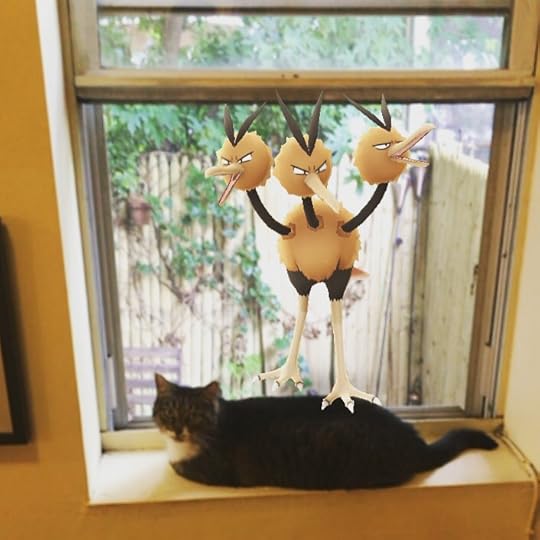Helen H. Moore's Blog, page 717
July 16, 2016
Mike Pence is even worse than you think: Trump’s VP pick has a long, disastrous record of opposing LGBT rights
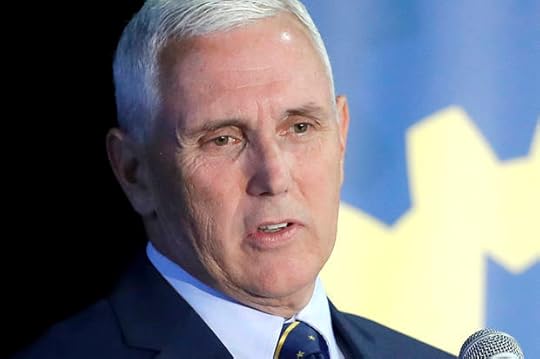
Mike Pence (Credit: AP/Darron Cummings)
Mike Pence won’t say whether he believes it’s OK to discriminate against LGBT people. The Indiana governor was repeatedly asked about his stance on the issue during a 2015 interview with ABC’s George Stephanopoulos on “This Week.” Stephanopoulos posed the question eight times. Pence wouldn’t say. More recently, he was asked the question during a town hall on February 11. “In a simple yes or no answer, do you believe that gay and transgender people should be able to be fired from their jobs just for that reason?” an audience member inquired.
He offered yet another trademark non-answer. “It’s a great privilege for me to be your governor,” Pence said, adding that he “will not support legislation that diminishes religious freedom.”
But for anyone familiar with Pence’s record on LGBT people, you don’t need to ask: The Tea Party favorite, who Donald Trump announced on Twitter Friday would be his running mate, has one of the most virulently anti-gay records of any government official. Although Pence made headlines last year for passing legislation that would allow businesses to deny services to people based on sexual orientation or gender identity, the Indiana governor has a long history of opposing LGBT equality under the guise of religious freedom and family values.
Mike Pence, who also built his career on restricting abortion rights, is a bad choice for LGBT people — and everyone else.
Pence became a national lightning rod in 2015 for signing into law the Religious Freedom Restoration Act, the first domino in a wave of “religious liberty” bills introduced nationwide. (Mississippi’s House Bill 1523, passed in March, was recently overturned by a federal court.) RFRA was an economic disaster for the state, with 12 conventions pulling out of Indiana in protest of the law. A study from the Center for American Progress estimated that the bill’s passage took a $250 million toll on the state.
The Republican governor signed a “fix” to the bill last year that was intended to keep LGBT people from being discriminated against in localities that have laws preventing it, but ThinkProgress pointed out there’s a loophole even in the compromise. “Though the fix protects against discrimination by most individuals and businesses, it does still permit RFRA to be invoked by churches, nonprofit religious organizations, or clergy who engage in discrimination,” the website reported.
For Pence, his opposition to LGBT equality is not new. He’s stood against the rights of queer and transgender people since first being elected to the U.S. House of Representatives back in 2000. Pence, who also backed the Defense of Marriage Act (DOMA), supported a constitutional amendment in 2004 that would restrict marriage as a union between one woman and one man. He even co-sponsored it. “I believe marriage is the union between a man and a woman and is a unique institution worth defending in our state and nation,” Pence later said on the subject. “For thousands of years, marriage has served as the glue that holds families and societies together.”
As the governor of Indiana, he would push HJR-6, a 2013 law that prohibited same-sex marriage in the Hoosier State and blocked unions recognized by other localities from being recognized. Pence, who has earned a zero rating from the Human Rights Campaign, has claimed that marriage equality will bring about “societal collapse.”
In addition, Pence has urged that gays be banned from military service entirely. On his 2000 campaign website, Pence posted a platform referred to as “The Pence Agenda.” It read, “Homosexuality is incompatible with military service because the presence of homosexuals in the ranks weakens unit cohesion.” When asked his opinion of “Don’t Ask, Don’t Tell,” he told CNN that the military should not be “a backdrop for social experimentation,” which he believes would result from gays being allowed to serve openly. (DADT was struck down in 2010.)
His 2000 agenda also opposed “any effort to recognize homosexual’s [sic] as a ‘discreet [sic] and insular minority’ entitled to the protection of anti-discrimination laws similar to those extended to women and ethnic minorities.” He even advocated against HIV funding, urging that money be redirected to discredited anti-gay conversion therapy programs.
In regards to blocking LGBT protections, he has certainly walked the walk. As a congressman, Pence opposed the Employment Non-Discrimination Act (ENDA), which would prohibit workers from being fired on the basis of sexual orientation or gender identity. Even after the passage of same-sex marriage, you can be let go from your job in 28 states simply for being LGBT. Pence said that ENDA “wages war on freedom of religion in the workplace,” as The Atlantic reported.
Pence has further opposed allowing transgender students to use the bathroom that corresponds with the gender they identify with and expanding hate crime legislation to include gender identity and sexual orientation. Seven years ago, Pence voted against the Matthew Shepard and James Byrd Hate Crimes Prevention Act.
If Donald Trump is such a “friend to the gays,” as he has attempted to bill himself in recent weeks, why would Trump pick a running mate with such a bad track record on LGBT rights?
That answer is simple. He appeals to the kinds of hardline social conservatives whom Trump’s campaign has struggled to court. Vice presidential picks are notably catered to balance out a candidate’s perceived weaknesses. In the case of Hillary Clinton, she might be keen to select someone who appeals to progressives who supported Sen. Bernie Sanders or the young voters that haven’t rallied around her campaign in the same way they did Obama’s 2008 nomination, like Sen. Elizabeth Warren. (Others now on her rumored short-list include Virginia Senator Tim Kaine, a strong gun control proponent, and Obama Labor Secretary Tom Perez.)
In Trump’s case, his electoral Achilles’ heel is evangelicals: A May survey published in Christianity Today found that he has a high unfavorability rating (67 percent) from conservative Christians. A further report from Gallup found that a majority of evangelicals who do support him are doing so as a vote against Clinton, not because they believe he stands for them.
Meanwhile, influential religious conservatives, including Tony Perkins, of the Family Research Council, and James Dobson, of Focus on the Family, have been hesitant to throw their weight behind Trump. “I am very wary of Donald Trump,” Dobson said in a December 2015 email, as the Washington Post reported. “Trump’s tendency to shoot from the hip and attack those with whom he disagrees would be an embarrassment to the nation if he should become our Chief Executive. I don’t really believe Trump is a conservative.”
If Donald Trump wants to secure support among faith-based voters in the heartland, Pence — who became an evangelical cause célèbre after RFRA — might help him get there. But with one of the nation’s most virulently anti-gay politicians potentially a heartbeat away from the presidency, the livelihoods of millions of LGBT Americans stand in the balance.
July 15, 2016
Buying “Ghostbusters” — or not: How buying in or boycotting a summer family movie became a political act
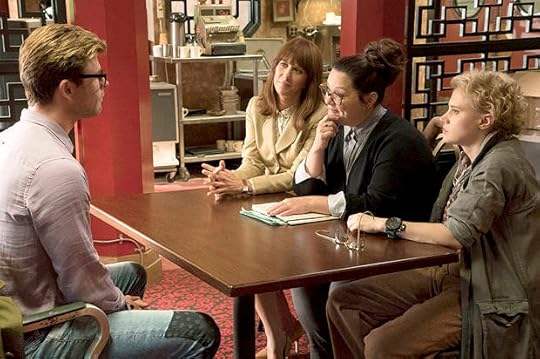
(Credit: Columbia Pictures)
It’s just a movie, people.
Watching the “Ghostbusters” reboot was like going to McDonald’s. It is disposable, thoroughly enjoyable and distinctly American mass-produced entertainment. I savor the flavor of a Big Mac with the same casual attitude that I and the others attending my screening chuckled throughout this movie. This makes it all the more remarkable that it has been inextricably linked with controversy over gender politics and nostalgia culture that, really, demonstrate one thing: We have become a society of consumers, defined by the political as well as cultural brands we buy and buy into.
When you dissect the controversy related to the “Ghostbusters” reboot, it predominantly stemmed from two sources. One was undeniably misogynistic, a knee-jerk reaction against seeing such a major franchise associated with women, thanks to gender conservatives being used to seeing only 15 percent of movies star female protagonists. The other was the one focused on by James Rolfe (i.e., Angry Video Game Nerd), who mainly complains that he wanted a movie that continued the initial franchise and hinted that it was disrespectful to reboot the property with a title that could confuse it with the original film.
These two sentiments, combined with a trailer so maligned that it quickly became the most unpopular in YouTube history, created a perfect storm of attention surrounding this movie. You could be drawn into the nostalgia for a beloved blockbuster franchise (as well as those inclined to dislike them), or you could take symbolic stands on the intersection of gender politics with popular culture … left or right-wing.
As far as the politics are concerned, it means we should be relieved this movie isn’t terrible, as the outright misogynists said it would be. It has a 75 percent rating on critical aggregate RottenTomatoes and a 60 rating on Metacritic and, though not likely to supplant “The Secret Life of Pets,” is still poised to garner respectable box office results this weekend. Then again, what does it say that we would consider it a setback — or at least highly unfortunate — if the movie was considered to be an embarrassment? What if it actually had been terrible … Could we be honest with our own tastes without being labelled as sexists?
The resulting movie was, based on my viewing, a product perfectly calibrated to avoid that outcome. It aims to be a good family film for the summer movie season, and it fits right in with the buttery popcorn I ate while watching it. Melissa McCarthy, Kristen Wiig, Kate McKinnon, Leslie Jones and Chris Hemsworth were easily the best thing about the film, and any promise the franchise has in the future will rest on capitalizing on their chemistry and allowing them to improvise. As such, in terms of delivering a quality “Ghostbusters” product, it’s hard to really complain about this film on its merits.
Hence it addresses the gender politics angle of its inception through juxtaposition gags (the leered-at target of sexual objectification is a man played by Chris Hemsworth) and some swipes about negative message board comments and virginal misanthropic nerds. It also, admirably, creates a story in which the female protagonists’ gender matters not much at all to how the plot unfolds. All of this is commendable, although in my opinion done better in other female-led franchises (“Aliens,” “The Hunger Games,” “Frozen”).
Similarly, James “Angry Video Game Nerd” Rolfe has no reason to be upset at the idea of needing to ask whether the term “Ghostbusters” hereafter refers to this movie or the 1984 one. It pays due homage to the original … because of course it would. Those references to Slimer, the Stay Puft Marshmallow Man, the logo, the theme song and other aspects of the “Ghostbusters” brand are necessary to draw in the nostalgia audience. That’s how you connect a reboot to an existing franchise. It’s what one of the most successful rebooted franchises, Christopher Nolan’s Batman trilogy, did in its own melodramatic and cerebral way — although as reboots go, “Ghostbusters” struck me as qualitatively closer to the most recent “Star Trek” efforts.
If the bottom line is that Sony can get your money by making you want to see a new film associated with the “Ghostbusters” brand, so be it. If they get you because you enjoy the style of comedy provided by Paul Feig, Melissa McCarthy, et al, so be it. If a bunch of misogynists overreact to the film and they can sell tickets through a desire to express solidarity with the case of gender representation in cinema, all the better. The real story here is that “Ghostbusters” demonstrates just how effectively we have been segmented, culturally and politically, through the brands with which we identify. As a result we have so commodified culture and politics that purely consumerist decisions feel more meaningful than they really are.
For what it’s worth, at the screening I attended, young people seemed to get more out of it than the older ones, but most of the thirty or so people there chuckled consistently laughed at the jokes, myself included. The movie is a solid B. And yet it has and will no doubt continue to elicit fulsome praise and bigoted denunciations alike, regardless of its quality, because that is how our culture has trained us to react to the various cultural and political nerves that this film triggers. This, I suspect, is the real story behind the “Ghostbusters” reboot.
Don’t fear the Poképocalypse: Pokémon Go is a fun phone game, not the end of life as we know it
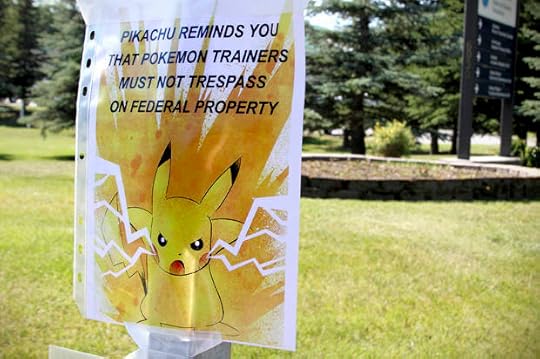
A sign posted at the National Weather Service in Anchorage, Alaska, July 12, 2016. (Credit: AP/Mark Thiessen)
Pokémon Go is a new smartphone game that has become an instant international sensation. The game uses GPS technology to populate the real world with digital creatures called Pokemon, which can be seen through a player’s phone screen, in a technology called “augmented reality” (AR).
(Note to readers: That is not a real three-headed bird standing on my cat.)
The players collect these cartoon characters and then play combat games with them at virtual “gyms”, which are also located digitally throughout the cities using modern mapping technology.
To players, it’s a silly game, a way to while away the time and explore your city.
To many others, however, Pokémon Go is a portent of doom, a terrifying new technology that puts people, especially children, in mortal peril, while also signaling the destruction of life as we know it.
“Pokémon Go is a harbinger of things to come,” Ezra Klein writes dramatically at Vox. “We are being warned. By Pikachu.”
“The easy analogy here is drugs,” Klein writes. “We know drugs are a cheap way for people unhappy, or unsatisfied, with this reality to escape to a (temporarily) more pleasurable one.”
“How far are we until your VR life is far more interesting, far more pleasurable, than your real life?” Klein wonders. “How far are we until your walk to work is better with augmented reality than without it?”
Many people are already augmenting their reality during their work commutes by listening to podcasts, radio or audiobooks, but sure, cartoon animals on your phone will be the tipping point where alleviating boredom turns into social catastrophe.
Klein is far from the only one intoning about the grave dangers of Pokémon Go. The news features a steady stream of overblown stories about players getting hurt, being robbed or being predated on by pedophiles. Police are reporting phone calls from busybodies who claim to believe that people goofing off on their phones is “suspicious activity.” (911 is an important public service, people. Don’t abuse it.)
“Concerns about social decay are nothing new — and they’re certainly not exclusive to video games,” Norman Caruso, the host of “The Gaming Historian,” explained. “Before people were wringing their hands over Pokémon Go, there was panic over the Harry Potter series. Before that, there were concerns about the way Elvis danced and before that, people worried about flapper-style haircuts.”
There’s an irony in this particular panic, IGN writer Kallie Plagge argued, as the typical “anti-technology sentiment is that young people are on their phones too often, not going outside and doing things,” but with Pokémon Go, the panic is “about going outside and being with people.”
“It was inevitable that Pokémon Go would bring out ironically viral neo-luddism, in the form of fake news stories and rumours about causing traffic accidents or paedophiles luring kids to their doom,” feminist sociologist Katherine Cross argued. “Moral panic attending new technologies is inevitable, and if nothing else, proves that augmented reality has well and truly arrived.”
An instructive historical example is the Dungeons & Dragons panic of the ’80s. Nowadays, most people see the role-playing game, correctly, as just a fun, immersive game that encourages players to use their imaginations, but in the early ’80s, the immersive aspects set off a nationwide panic.
“The 1980s were prime years for accusations that the game fostered demon worship and a belief in witchcraft and magic,” Clyde Haberman notes in a historical piece for the New York Times. “Some religious figures cast it as corrupting enough to steer impressionable young players toward suicide and murder.”
The concerns over D&D, a game where players sometimes act out their characters, echo Klein and others’ fears about Pokémon Go: That the fantasy is too immersive, and that people who play with it are in danger of going so far in they can never come back.
This fear was stoked in the ’80s by a movie called “Mazes and Monsters”, a cautionary tale about fantasy role-playing games. The main character, played by Tom Hanks (!) in his first major role, gets so caught up in the game that he starts to think that he is his D&D character. For some reason, this makes him think that the World Trade Center is not only a fictional set from D&D, but that he has to jump off it. No, the plot doesn’t make much sense, but neither do these moral panics.
Caruso traced concerns over video games to 1976, when the game Death Race led to “psychological studies on the effects of video games,” and into the ’90s and 2000s, when games like DOOM and Mass Effect caused what-about-the children panics.
Caruso argues that “some concerns are valid”, and those valid concerns have led to productive conversations about rating video games and the portrayal of women in them.
“Most of the time,” however, Caruso adds, “panic over the latest video game is overblown. The hysteria dies down almost as quickly as it starts.”
“This isn’t the first time that people have panicked over Pokémon,” Caruso continues. “When it came out in the United States in 1998, parental groups said that it created a drug-like addiction. Religious groups said that it promoted Satanic activities.”
“Is Pokémon Evil?” asked a headline in a November 1999 edition of Newsweek.
“Schools are banning it; parents worry about addictive behavior,” the piece reads. Parents that journalist Malcolm Jones spoke with compared it to drugs. There was even a lawsuit against Nintendo that tried to argue the game was illegal gambling.
“Some also have expressed concerns that because the Pokemon figures include characters that suggest supernatural powers apart from God, they may provide children with an entree into witchcraft and the occult,” the Washington Times reported in December 1999. One church reported a service where children relinquished their Pokemon cards, which were then burned.
The panic grew so large that the Vatican stepped in, issuing a press release that reassured parents that Pokémon has no “harmful moral side effects” and is instead “full of inventive imagination”.
The same pattern is repeating itself, but there’s no reason to panic about the panic.
“What is miraculous about Pokémon Go, compared to D&D back in the ’80s, is that it’s not a niche hobby,” Cross explained.
“There is just as much press, if not more, celebrating Pokémon Go than there is stoking anxieties about it,” she said, which she attributes to the fact that “‘early adopters dramatically outnumber the hand wringers,” demystifying the game and making it harder to scare people about it.
“Pokémon Go is nothing to fear,” Caruso says. “It’s getting people outside, it’s bringing people together, and most importantly, it’s fun.”
The mystique of Daniel Johnston: “There’s something ancient in all of this — the notion of the eccentric”
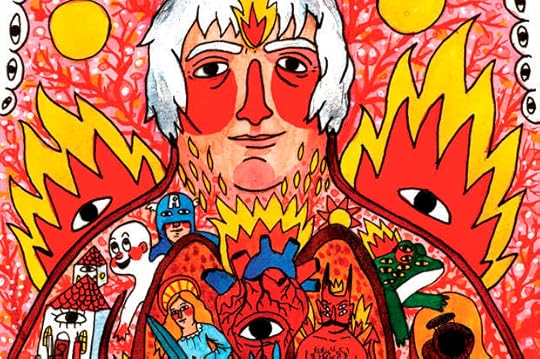
Cover detail of "The Incantations of Daniel Johnston" (Credit: Two Dollar Radio)
If there’s a cultural ambassador to Appalachia at this moment, it very well may be West Virginian writer Scott McClanahan. “Crapalachia,” McClanahan’s captivating pseudo-memoir partially based on his own childhood, encapsulates what it’s like to grow up in the not-quite-deep South of America. But McClanahan has been careful to underscore that his portrayals of Appalachia and West Virginia have always been his own takes on the region.
Following praise from both establishment literary figures as well as those on the outskirts of the mainstream publishing world, McClanahan is in high demand. Indeed, his long-anticipated work, “The Sarah Book,” has been dubbed “the ‘Chinese Democracy’ of indie lit” by his own publisher at Tyrant Books, Giancarlo DiTrapano.
McClanahan’s latest work, “The Incantations of Daniel Johnston,” out next week from Two Dollar Radio, is a graphic novel about the life of Daniel Johnston, the influential outsider rock musician and artist also from West Virginia. Like the accompanying images provided by Spanish artist Ricardo Cavolo, McClanahan’s prose is intoxicating, taking care to detail magnificent anecdotes from Johnston’s life while simultaneously shedding light on ineffable notions like culture, psychology and fame.
Salon spoke with McClanahan to discuss his first foray into writing for a graphic novel, how he addressed his subject’s infamous mental illness and why he prefers small, independent presses to release his writing.
“The Incantations of Daniel Johnston” is compelling for a number of reasons, but I find it fascinating that you were a hired gun for the project. Ricardo Cavolo had already published a version of the book in Spain and then Two Dollar Radio, your publisher, asked you to write the prose for the American release.
It’s like prostitution almost, right? [Laughs.] It’s been something completely different for me. There’s something kind of freeing about it in some way. I’ve always made these very private, personal books with private, personal stories for an audience of a few people. I don’t know if I feel like I’m at the end of that, but you use up your material after a period of time, writing personally about yourself.
I’ve always been interested in biography. Biography is fascinating whether you’re talking about Plutarch or one of my favorite writers, like James Boswell’s “The Life of Samuel Johnson.” It’s almost like working with a ventriloquist’s dummy. You use another person as a way to continue talking about yourself.
There’s an element of it that is kind of freeing in that way. I want to do more of it in maybe a more traditional, biographical format more so than a weird art book. It’s been nice.
There’s another layer of complexity to this because you haven’t met or spoken with either Johnston or Cavolo. Is there a bit of anxiety over whether or not you’re satisfying these other individuals that are involved in the production of this work?
Yeah, I’m sure there is some anxiety, but at the end of the day I made something very personal and private for myself. I’ve satisfied myself. If I did it for the small segment of the population that like Daniel Johnston or the small segment of the population that like Ricardo Cavolo or to respect what Two Dollar Radio wanted out of it, I don’t think I would have done it.
This is my textual version of Daniel Johnston with accompanying illustrations from Cavolo. I’m not really interested in Daniel Johnston. Daniel Johnston has produced his own Daniel Johnston-creation. I’ll leave that up to him.
I always remember Proust: All personality is a social construction. I believe in that to a certain extent. You can think you have a personality, but in reality, it’s people’s ideas of who you are that create the person that you think you are. Or, that great Robert Burns poem, “To A Louse.” The woman comes into a Presbyterian Church and she’s all dressed to the nines, but what she doesn’t realize is that the person sitting behind her can see the lice in her hair. What would that do to us, to perceive ourselves the way others see us? That would almost destroy us.
With the Daniel Johnston I created, I wanted to it make my Daniel Johnston. At the end of the day, that’s me. You have friends that are probably versions of your own self that you accept into your own life and psyche. They’re probably much different with someone else and if you saw them with their other group of friends, you wouldn’t know them.
I think the book’s kind of about that — the mysteries of who we are and the way people label us or construct us or create us.
Johnston’s troubles with mental illness are almost unavoidable and the book addresses this head on. But the topic of mental illness is often deployed as a marketing device in some way. I’m struck by your ability to address Johnston’s problems in a way that doesn’t feel like you’re trying to aggrandize his mental illness to sell books.
I guess it’s an old idea. I mention English Romantic poets in the book. We live in an age of post-New Criticism where we try to separate the life of the artist from the art. But would you be reading Shelley or Byron if we didn’t have so many great, fucking cool-ass anecdotes about them and their lives? Maybe not.
It’s the same question of Hank Williams. Is Hank Williams a genius who was an alcoholic or is it because he felt life differently and in a darker, more emotional level? Is that core of him what allowed him to produce those songs?
I don’t know if we’ll ever really answer that. Part of the thing about Johnston that I love about him is the life. It’s the anecdotes. He takes the plane down that his father is piloting. That is compelling, even if he wasn’t this amazing songwriter.
There’s something really touchy about these issues — especially mental illness. You don’t want to romanticize it. I hope that I didn’t romanticize it. But I guess it gets back to that Proust quote. Psychology is there to normalize us within some consumerist, capitalist society so that you can work a job, start a family and buy a bunch of shit that you don’t need.
There’s also something ancient in all of this — the notion of the eccentric. We’ve almost destroyed that notion of someone that is trapped in their own house. Now, we say that person is agoraphobic. In the eighteenth century, we called them eccentric. We’ve replaced old ideas about the brain with new ideas. They’re the same concept, we’ve just changed the terminology.
This is not to say that these aren’t serious issues and people aren’t helped every day by modern psychology and medication. God bless that stuff. But I hate when we’re condescending toward visions or hallucinations without realizing that there’s some truth in them. I think there’s a power in the idea of an individual behaving as an individual.
It’s like the Thelonious Monk story. He comes back from Europe and his suitcase is full of pop bottles. His suitcase is full of them because he’s been drinking soda pop in Europe and he wants to make sure he gets his five cents when he returns them for recycling. There’s still some logic and there’s still some beauty in that anecdote that tells us something about us.
Maybe that’s the reason why we’re so interested in these artists who do experience these things. It allows us to experience these things. There’s a freedom in behaving in a way that the rest of the world doesn’t.
You’re using very real examples, but it gets at this notion that the function of literature is pedagogical.
Yeah, for sure. Things are so much more complicated than anything you can get on the surface. Just look at Weston State Mental Hospital, right here in West Virginia. I grew up with jokes about that. “We’re gonna send mom to Weston!” I had an uncle that spent quite a bit of time there. My roommate in college, his uncle spent a decade there.
We think, on the surface, of mental institutions as these horribly repressive, “One Flew Over the Cuckoo’s Nest” places, but at the same time, this was the home of these people. These were individuals who were prisoners of their time. You get the same idea when you think of lobotomy, this evil concept. There was a part of people that thought they were doing some sort of good.
It’s such a complex and multifaceted issue.
You seem to take a lot of stock in the home for your books. How important is the company you work with for your books to your process?
I think it’s been incredibly important. It’s hard in some ways to remove myself from it because I’m putting out more books with Giancarlo DiTrapano at Tyrant Books in the future, including a quote-marks-around-it traditional novel here in the next year or two or three or four.
It’s difficult to separate friendships now. With Eric and Eliza [Obenauf] at Two Dollar Radio and Giancarlo at Tyrant, it’s maybe past the point of friendship now. I feel incredibly close. It’s hard to figure out now what will be or what was some sort of ideology or whatever that I had about independent press.
I’ve just been left alone for the most part. I think that’s what you want and need to a certain extent.
It seems very punk rock from my standpoint.
Yeah, yeah. I’m at the age now that I’ve been doing internet literature since 2008. I was keeping up with it a little before then, but I’m seeing my contemporaries that I knew from 2008 who go on and publish with a big house or a big press. Some of them work out well, it appears. And some of them don’t work out so well. I mean, they might get a crappy looking cover, right? And they might wind up getting lost in the shuffle of the other twenty books that the big house is putting out that month.
The books that I love, for the most part, have always come from the independent presses. I’m thinking of the Evergreen Review, New Direction and Olympia Press. These were mom-and-pop amateur operations. And thank God they were. This isn’t to say that a big press is bad. There are editors like Emily Bell [at Farrar, Straus and Giroux] that feel like they belong at an independent press.
Maybe it’s a personality thing. I don’t know if I could play the game of big press. I have an agent, but I’m sure she just thinks that I’m stupid. Maybe I am. But there’s something holy about my stupidity.
It’s similar to what you said about friends. Maybe the mode of delivery of your work is just an extension of yourself.
Yeah. You can have two or three or four emotions at the same time. Is there a part of me that would want to be a part of a big press and apply for fellowships and go to parties where all of the guys are dressed like they are in GQ and everyone is drinking champagne out of really tall glasses?
I’ve heard Jarvis Cocker talk about that, like the world is a kind of hotel in terms of what you’re trying to achieve. You want to be invited. “Come in here! This is the celebrity room. There are only five people invited!” And you want to be one of those five people that are invited. I’ve said that maybe I’m stupid. But maybe I’m smart enough to know that that room, once you get in it, stinks. [Laughs.]
I want acceptance. I do. But maybe my personality is just too orney to ever get it.
Military factions attempt coup in Turkey, they say “to reinstate democracy”

Turkish soldiers block Istanbul's Bosporus Bridge after a reported military coup attempt on Friday, July 15, 2016 (Credit: AP/Emrah Gurel)
Elements within Turkey’s military launched an attempted coup to topple the government of President Recep Tayyip Erdogan.
The coup leaders disseminated a statement on state broadcaster TRT on Friday night claiming they had taken over.
They condemned the Turkish government’s erosion of democratic and secular rule of law and declared that the country is now being run by a “peace council” that will guarantee citizens’ freedoms, regardless of religion, race or language.
“Turkish armed forces seized the rule of the country completely with the aim of reinstalling the constitutional order, democracy, human rights and freedoms, to make rule of law pervade again, to re-establish the ruined public order,” the military said, The New York Times reported.
“All the international agreements and promises are valid. We hope our good relations with all global countries goes on,” they added.
The military said it was temporarily instating a curfew and martial law.
President Recep Tayyip Erdogan escaped. His location is unknown. Erdogan reportedly tried to seek refuge in Germany, but was denied. He then allegedly sought refuge in London, although his plane was later reported to have landed in Istanbul.
Turkey is a NATO member and a close Western ally.
Erdogan has become increasingly authoritarian in recent years. He has imprisoned large numbers of critics and clamped down on journalism, closing anti-government newspapers and jailing reporters. Erdogan has repeatedly called human rights activists and journalists as “terrorists.”
Erdogan’s government has also supported extremist Islamist groups in Syria.
Opponents have described Erdogan, a right-wing Islamist leader, as an autocrat who hopes to restore the Ottoman empire, with himself as the sultan.
Some opposition groups, however, condemned the coup. The coup leaders claimed they hope to restore democracy, but some opposition groups said they would rather change happen via elections.
Western governments allied with Erdogan, such as the U.S., also condemned the coup. The U.S. said it did not recognize the military takeover. The White House released a statement urging “all parties in Turkey should support the democratically-elected government of Turkey, show restraint, and avoid any violence or bloodshed.”
According to the state-run Anadolu Agency press agency, Turkey’s chief of military staff was held hostage at the military headquarters in the capital Ankara. Other hostages were reportedly also being held.
BREAKING State-run AA: Turkey's Head of Armed Forces Hulusi Akar taken hostage at Chief of Staff HQ, #Ankara. pic.twitter.com/n6CmPa5OpO
— CNN Türk ENG (@CNNTURK_ENG) July 15, 2016
There were numerous reports of violent attacks, including bomb blasts in the capital Ankara.
The Turkish parliament was allegedly bombed. According to state media Anadolu Agency, 12 people were wounded in this attack.
TURKEY LIVE UPDATES: Bomb blasts reported in Istanbul and Ankara – https://t.co/smkorNzo77 pic.twitter.com/ge9YU4Tjfp
— Reuters World (@ReutersWorld) July 15, 2016
According to state-run Anadolu Agency, 17 policemen were also killed in attack a special operations headquarters.
A Turkish F-16 jet also reportedly shot down a helicopter used by the coup plotters.
Turkish soldiers blocked both of the Bosphorus bridges in Istanbul.
There were numerous of planes flying low in the capital.
Turkish soldiers block both bridges on the Bosphorus in Istanbul and jets flying low in Ankara. Reason not clear yet pic.twitter.com/tMG7KKYvGh
— Selin Girit (@selingirit) July 15, 2016
A senior E.U. source told Reuters, “It looks like a relatively well orchestrated coup by a significant body of the military, not just a few colonels. They’ve got control of the airports and are expecting control over the TV station imminently. They control several strategic points in Istanbul.”
The Turkish president and prime minister blamed the coup on the political movement led by opponent Fethullah Gulen, although is no evidence linking Gulen or Gulenists to the coup. Erdogan’s administration has often claimed its opponents are working for Gulen.
Gulen’s group the Alliance for Shared Values released a statement calling statement by Erdogan and his supporters “highly irresponsible.”
Erdogan called on Turkish citizens to flood the streets in protest of the coup.
Prime Minister Binali Yildirim said in a television broadcast, “Some people illegally undertook an illegal action outside of the chain of command,” The New York Times reported.
“The government elected by the people remains in charge. This government will only go when the people say so,” the prime minister insisted.
All flights from Istanbul’s Ataturk airport have been cancelled.
Internet monitoring groups have also said that access to Facebook, Twitter and Youtube has been restricted in Turkey.
It is unclear what forces within the military are behind the coup.
The coup leaders say they are secular and pro-democratic. And their statement promising to protect the freedom of citizens of different religions, races and languages suggests they may not be far-right forces or Islamists.
For months, Erdogan has also waged a brutal war on Kurdish militants who hope to create an independent Kurdish state. The Turkish military has killed hundreds of Kurdish civilians and displaced hundreds of thousand.
At the same time, the hyper-nationalist far-right has been on the rise in Turkey, which opposes both Erdogan and the Kurds.
(This article was updated at 8:45 pm EST.)
Sunday’s police riot in Baton Rouge: Anti-brutality protests met with brutality
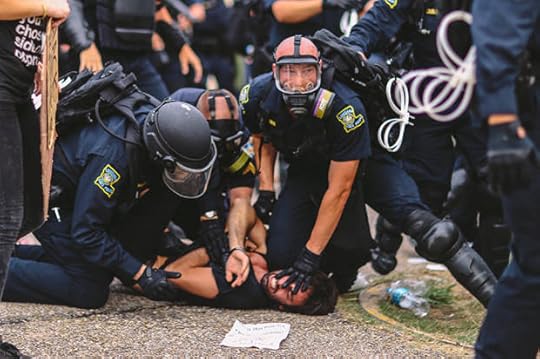
On Sunday July 10th, Baton Rouge Police violently arrest protester Max Geller. (Credit: Patrick Melon; @melontao)
A good way for a white person to get a taste of the police brutality that appears to be routine for black people in Baton Rouge is to protest against it in the streets. And so I was not exactly surprised to see a photograph of a police officer grabbing the face Max Geller — an activist and performance artist of sorts for causes ranging from Palestinian freedom to the horribleness of the painter Renoir, and a friend of mine from high school — during protests against the police killing of Alton Sterling.
Last Sunday, Baton Rouge police officers charged a crowd of protesters, posing no obvious threat and gathered in a residential neighborhood, and threw Geller to the ground. One then grabbed his face and appeared to slam his head into concrete. This is all on video.
“It wasn’t clear that they were going to march on us until they started moving,” said Geller, who joined a group of white protesters to form a barricade between police and black activists. They “just started charging into the crowd and tackling people.”
Geller tells me that he was dragged behind an armored vehicle emitting painful sounds from a seeming long-range acoustic device and then hit on his head with a blunt object and knocked unconscious. At the hospital, he was diagnosed with a concussion. He sat in handcuffs, he says, mockingly asked by police if he was homeless.
Geller’s account echoes the allegations laid out in a lawsuit filed by the American Civil Liberties Union of Louisiana and groups including North Baton Rouge Matters and Black Youth Project 100 charging that police used excessive force, pointed live automatic weapons at protesters, arrested legal observers and journalists without probable cause, and subjected protesters to indiscriminate mass arrest — all to intimidate them from protesting excessive force in the future.
The lawsuit charges that protesters “engaged in this peaceful speech, association, and protest on the streets, sidewalks, and medians of Baton Rouge” were “met with a military-grade assault on protestors’ bodies and rights.”
It was “very aggressive, very militaristic,” says Daiquiri Jones, 27, a black protester from New Orleans who met Geller in detention. Jones says he was standing on the sidewalk recording video of police assaulting and arresting protesters who had gathered on private property, in front of a house, at the owner’s invitation, when another group of police rushed up behind and threw him to the ground. “It felt like an ambush.”
Protesters, as alleged in the lawsuit, were given contradictory orders to disperse from an area that was difficult to escape from because it was surrounded by police.
Jones says that police ordered him to put his hands behind his back but that he couldn’t do so, because they were under his body, which was being pressed into the ground by police.
“No one was standing in the actual street,” says Jones. “It was a residential neighborhood. There was no traffic at all.”
In detention, both Geller and Jones say they were shown a video about prison rape that was designed more to frighten than protect, and strip searched. While undergoing his search, Jones says that he was threatened with mace if he didn’t comply. According to the lawsuit, other protesters report being maced or pepper sprayed in prison for making comments or singing songs. Geller says that multiple requests to see medical personnel were ignored for hours even though he was bleeding from his head.
In response to the lawsuit, a Baton Rouge Police Department spokesperson told The Advocate that they don’t comment on pending lawsuits.
You can take some guesses as to why. When journalists are arrested — and when two ACLU of Louisiana employees allege they were given an unlawful order to disperse and threatened with arrest — the police are strongly suggesting that they hold constitutional rights across the board to be of little import.
The Baton Rouge police have an ugly history of abuse, according to Times-Picayune writer Jarvis DeBerry. Numerous law enforcement officers from other departments who came to Louisiana in the wake of Hurricane Katrina charged that local officers “were engaging in racially motivated enforcement, that they were physically abusing prisoners and the public and that they were stopping, questioning and searching people without any legal justification.” One allegedly “attempted to thank” a visiting officer “for his help by letting him ‘beat down’ a prisoner.”
Since heavily armed police rolled through the streets of Ferguson in 2014, making global headlines for their military-style occupation of an American city, other police departments have made efforts to show restraint and de-escalate potential conflicts at protests against police killings. Not so in Baton Rouge. From the videotaped killing of Alton Sterling to the police riot against protesters that followed, the world is watching Baton Rouge cops. So far, they don’t seem to care.
I can’t bear to watch HiddleSwift: The public spectacle of love-tweet-delete is just too much

Calvin Harris, Taylor Swift, Tom Hiddleston (Credit: Reuters/Danny Moloshok/Jonathan Ernst)
There are certain inevitable aspects of online life that are guaranteed to stress an individual out, to cause an elevated heart rate and tiny beads of sweat to appear above the upper lip. For me, they are: any post with more than two hashtags, the sight of someone else’s phone teeming with bright red, unread texts and emails, and primarily, happy photos of celebrity couples. If one half of that celebrity couple is Taylor Swift, multiply the cringe factor by about four.
I should admit here that I probably know more about Taylor Swift and her personal life than is healthy. (Do I get a pass for having school-aged daughters? Because I also know A LOT about Ariana Grande too.) I should also say that I am generally Team Taylor. She’s a talented songwriter, a multiple Grammy winner. She posts adorable pictures of her cookie baking endeavors. And frankly, I could teach an entire course on Female Sexual Agency in the Age of T. Swift, because her unapologetic and expansive dating history is pretty impressive. The list of rumored and confirmed conquests is on a DiCaprio level. Not bad for a small town girl from Pennsylvania. I just don’t want to see it.
I have zero interest in decoding what went down between her and Calvin Harris to cause the poor guy to have a Twitter meltdown accusing her of “trying to tear your ex bf down,” nor do I care a bit that Tom Hiddleston feels the need to affirm their romance is “not a publicity stunt.” I also have also spent the past few years desperately trying to avert my eyes every time I’ve seen a lovey-dovey photo op with Swift and her latest paramour. I can’t tell you how relieved I was to have been out of town when those Fourth of July weekend pictures from Rhode Island broke.
Swift is not the only public figure with a scrupulously documented romantic life. And maybe I’m just a cynic, but there’s something about seeing almost any seemingly happy famous couple — other than maybe Catherine and William, because I think those kids are going to make it — on social media that makes me immediately wonder if they’re going to regret those someday. I just want Chelsea Peretti and Jordan Peele and Chrissy Teigen and John Legend to be in love forever, okay? I still haven’t forgotten about when Russell Brand wrote that whole beautiful chapter in his memoir about how much he loved Katy Perry and then the next thing you knew she was at the Grammys, single and singing songs about some unnamed garbage monster ex. Or when Gwyneth Paltrow said that marrying Chris Martin was the “best decision” of her life — right before consciously uncoupling from him.
Life is full of change and relationships don’t always last. There’s nothing unusual about a young person having serial partners, or of taking pictures with said partners. What’s unnerving about celebrity social media is the intensity and suddenly all-in approach that some stars seem to have to sharing their love with the world — and then the aggressive backtracking on their past.
Last month, as their relationship went up in smoke, both Swift and Harris went on a deleting spree, scrubbing old tweets and photos from their accounts. Buzzfeed reported in June that Harris had deleted every photo of Swift from his Instagram, and she selectively obliterated him as well — the photo of the locket he gifted her with on their one-year anniversary, that iconic, so perfectly set up piggyback ride pic from just last Fourth of July. It lives on in our hearts, Taylor, it lives on!
Deletion somehow makes real events, real relationships, seem disposable, and there’s a hollowness to that approach that can’t be easily clicked away.
Taylor Swift has survived, in different ways, Kanye West and John Mayer; she is made of very strong stuff. She doesn’t care about anyone’s judgment of her life choices or of her eagerness to share said life choices with millions of followers. She’ll be fine. But when I see those well-curated and disseminated photos of Tom Hiddleston on Instagram and elsewhere, merrily partying on Taylor Swift’s water slide, I just wonder how much more awkward they’ll seem in a few months — or whether they’ll even still exist at all.
“28 pages” showing Saudi connection to 9/11 attacks finally released after 14 years

Firefighters at the World Trade Center, after the attacks on Sept. 11, 2001 (Credit: AP/Mark Lennihan)
“While in the United States, some of the September 11 hijackers were in contact with, and received support or assistance from, individuals who may be connected to the Saudi Government,” states the previously redacted portion of the 2002 joint Congressional inquiry into the 9/11 attacks.
The redacted pages of the report were released on Friday, after nearly 14 years of pressure. The document was published on the website of the House Intelligence Committee.
Activists had persistently called on the U.S. to declassify this material, which actually consists of 29 pages, although it was long reported to be 28 pages. Even former members of the 9/11 commission asked the Obama administration to release the pages, saying they show Saudi support for the al-Qaeda attackers.
FBI and CIA documents disclosed that, while some of the Sept. 11 hijackers were in the U.S., they likely had contact with Saudi intelligence officers, the pages reveal.
The declassified document also shows that the intelligence community had information “indicating that individuals associated with the Saudi Government in the United States may have other ties to al-Qa’ida and other terrorist groups.”
According to the report, however, “it was only after September 11 that the U.S. Government began to aggressively investigate this issue,” given how oil-rich Saudi Arabia has been a close U.S. ally since the 1940s.
The FBI and CIA told the joint inquiry that “they are treating the Saudi issue seriously,” the report says, but they still had “only a limited understanding of the Saudi Government’s ties to terrorist elements.”
“In the view of the Joint Inquiry, this gap in U.S. intelligence coverage is unacceptable,” the report says, slamming the intelligence community and calling on it “to address this area of concern as aggressively and as quickly as possible.”
The report notes that the FBI and CIA created a working group to study Saudi Arabia’s ties to violent extremist groups.
Of the 19 Sept. 11 attackers, 15 were Saudi citizens. The Saudi monarchy has long staunchly denied involvement in the attacks.
Zacarias Moussaoui, a convicted 9/11 plotter, confessed in sworn testimony to U.S. authorities that members of the Saudi royal family had funded al-Qaeda before the attack. Saudi Arabia strongly denies this.
Former Sen. Bob Graham, who chaired the Senate Intelligence Committee during and after the 9/11 attacks, had for years insisted that the now declassified pages show Saudi involvement.
“There was an awful lot of participation by Saudi individuals in supporting the hijackers, and some of those people worked in the Saudi government,” former commission member John F. Lehman said in an interview published by The Guardian in May.
Internally, the U.S. and E.U. have long acknowledged Saudi Arabia’s links to extremist groups, as Salon has previously reported.
“Saudi Arabia has been a major source of financing to rebel and terrorist organisations since the 1970s,” the European Parliament wrote in a 2013 report, adding, “countries like Saudi Arabia, Qatar, United Arab Emirates and Kuwait do too little to stop rich and conservative donors from financing terrorist organisations through charitable and religious institutions.”
“The United States is well aware about the financing network starting from Arab countries and reaching terrorists organisations through charitable institutions,” the European Parliament report noted, cited similar statements made in secret by the U.S. government.
A classified 2009 State Department memo signed by then-Secretary of State Hillary Clinton admitted, “Donors in Saudi Arabia constitute the most significant source of funding to Sunni terrorist groups worldwide.”
“Saudi Arabia remains a critical financial support base for al-Qa’ida, the Taliban, LeT, and other terrorist groups,” said the U.S. government cable, which was released by whistle-blowing journalism organization WikiLeaks. (LeT is an acronym for Lashkar-e-Taiba, an extremist group based in South Asia that has its origins in U.S. support for Islamic extremists in Afghanistan in their war against the Soviet Union in the 1980s.)
The State Department wrote, “It has been an ongoing challenge to persuade Saudi officials to treat terrorist financing emanating from Saudi Arabia as a strategic priority.”
Saudi Arabia is a theocratic absolute monarchy that governs based on an extremist, sectarian strand of Islam known as Wahhabism. Wahhabism is ideologically very similar to the kind of Salafi extremism spread by violent groups like al-Qaeda and ISIS.
Many Muslims do not consider Wahhabism to be a legitimate form of Islam, arguing it is a distortion of the religion similar to the type of extreme, bigoted Christianity preached by fundamentalist groups like the Westboro Baptist Church or the Ku Klux Klan.
The Western-backed Saudi regime has also spent an estimated $100 billion in the past few decades exporting its extremist interpretation of Islam throughout the world, infusing its fundamentalist ideology in its ostensible charity work, funding madrasas, mosques and other institutions often in poor Muslim communities.
Despite this, the Saudi regime remains a close U.S. ally. In the past several years, the Obama administration has done more than $100 billion in arms deals with Saudi Arabia.
Widows of victims who died in the 9/11 attacks have long called on the U.S. to declassify the 29 pages of the report. In an op-ed in The New York Times in April, five wives of Sept. 11 victims blasted the close U.S.-Saudi relationship.
“We struggle to understand how financing the murder of 3,000 innocent people on 9/11 equates to being ‘closely allied with the United States,’” they wrote. “The Saudis should not be trusted, nor should they be considered our friends.”
The declassified “28 pages” can be read below:
Nice truck driver identified after Bastille Day attack leaves 84 dead, 202 injured in France: What we know so far

French police secure the area as the investigation continues in Nice, France, July 15, 2016. (Credit: Reuters/Eric Gaillard)
Authorities in France have raised the death toll from the Bastille Day attack in France Thursday evening to 84 people, with 202 injured, and at least 52 critically injured .
The driver of the 19-ton truck that rammed through the miles-long thoroughfare along the beach has been identified as 31-year-old Nice resident and Tunisian national Mohamed Lahouaiej Bouhlel.
The attack took place at about 11 pm local time, shortly after fireworks on the Promenade des Anglais to celebrate the French national holiday ended. Bouhlel “drove along a distance of about two kilometers,” hitting people and opened fire on the crowd before being killed by police, according to Nice officials.
“He was driving really slowly, that’s what was astonishing,” Richard Gutjahr, who described seeing the truck being tailed by a motorcyclist to the AFP. “The motorcyclist tried to overtake him and even tried opening the lorry driver’s door,” he said, explaining that motorcyclist was eventually hit by the truck. According to BBC, “when two police officers opened fire on the lorry, the driver accelerated and careered at full speed towards the crowd.”
Foreign victims include two Americans, three Germans, one Russian, one Armenian, one Ukranian and one Swiss, Le Monde reported. According to initial reports, one of the first victims of the attack was Fatima Charrihi, a Muslim woman, a mother of seven and resident of Nice. 11-year-old Brodie Copeland of Lakeway, Texas, was killed along with his father, Sean. Wife Kim told Fox News told Fox News that the family was on vacation for her 40th birthday.
At least 10 of the dead are children, according to officials.
Three UC Berkeley students are among the injured, according to a statement from the University. “Nicolas Leslie, 20, one of the 85 UC Berkeley students attending the study abroad program nearby, is still unaccounted for.”
According to the regional Council for the Muslim Faith, at least 12 Muslim families in Nice are known to have lost loved ones.
Authorities are also releasing more information about the attacker.
Bouhlel was married with children, although according to reports he was in the process of a divorce and lived in a separate home from his family. Still, French authorities have taken his wife into custody for questioning.
“He was not a Muslim, he was a s***. He beat his wife, my cousin, he was a nasty piece of work,” Bouhel’s relative told the Daily Mail. “Bouhlel was not religious. He did not go to the mosque, he did not pray, he did not observe Ramadan. He drank alcohol, ate pork and took drugs. This is all forbidden under Islam,” Walid Hamou, a cousin of Bouhlel’s wife said.
The attacker, who worked as chauffeur and truck driver, was convicted on assault-related charges earlier this year and the mayor of Nice told CNN that last he showed “signs of radicalization.” However, national authorities claim that Bouhlel was completely unknown to intelligence officials and that initial investigations have found no record that he had been radicalized in any way.
The 19-ton refrigerator truck he used for the attack was rented on July 11 in Saint-Laurent-du-Var, a town about six miles east of Nice, François Molins, the Paris prosecutor who oversees all terrorism investigations in France, said. From the New York Times:
In the truck’s cabin, officials said, the police discovered an automatic 7.65 mm pistol, a cartridge clip, several used and unused 7.65 mm cartridges, as well as a fake automatic pistol, two fake assault rifles — a replica AK-47 and a replica M-16 — a grenade, a mobile phone and documents.
President Obama made short remarks on Thursday’s attack.
“This is a threat to all of us,” the president said from the White House Friday. “On this Bastille Day, we are reminded of the extraordinary resilience and democratic values that have made France an inspiration to the entire world. And we know that the character of the French Republic will endure long after this devastating and tragic loss of life.”
Obama went on to slam suggestions to target Muslims, like that proposed by Newt Gingrich, as “repugnant”:
President Obama calls suggestions to target Muslims in America “repugnant.” #NiceAttack pic.twitter.com/lFyL7peCxv
— Fox News (@FoxNews) July 15, 2016
No group has yet claimed responsibility for the attack.
Playboy playmate body-shames woman in gym shower, gets banned from all L.A. Fitness locations

Dani Mathers (Credit: Reuters/Kevork Djansezian)
Playboy playmate Dani Mathers was banned from all L.A. Fitness locations on Friday after she posted a Snapchat mocking another woman using the gym’s showers. Mathers captioned the snap, “If I can’t unsee this then you can’t either.”
L.A. Fitness told TMZ — who originally broke the story — that it had filed a police report against Mathers.
In addition to her L.A. Fitness ban, Mathers has been suspended indefinitely from her regular guest-host spot on “The Heidi & Frank Show” on Los Angeles radio station KLOS, TMZ reported.
Mathers then posted an apology video — also on Snapchat — in which she said the picture was meant as part of a “personal conversation with a girlfriend and because I am new to Snapchat, I really didn’t realize that I had posted it.”
“I have chosen to do what I do for a living because I love the female body,” she explained. “And I know that body-shaming is wrong and that’s not what I’m about. That’s not the type of person that I am.”
Watch Mather’s apology video below, via TMZ:

